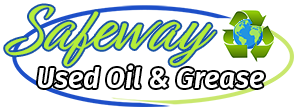How to Put Out a Grease Fire
If you’ve ever seen a grease fire ignite, you’re well aware of how quickly they can spread and engulf your kitchen. It’s important to keep kitchen safety in mind, both during and after cooking. Properly handling grease is the key to preventing and putting out grease fires.
How do grease fires work? They occur when the grease you’re cooking with becomes too hot. This can happen in as little as 30 seconds, so it’s important that you never leave your cooking unattended.
Here’s how to put out a grease fire, along with some other important kitchen safety tips.
How to put out a grease fire
If a grease fire starts in your kitchen, turn off the heat source right away and find something to smother the fire. This could be anything from a pot lid to a metal cookie sheet—just make sure it’s metal, so it won’t melt in the fire.
Baking soda and salt can also be used to smother small fires, but if you have a Class B fire extinguisher, that’s also a good way to get rid of the flames. Commercial kitchens should have at least one fire extinguisher available.
Once the flames are out, wait until the debris has cooled to clean it up. If, however, you are unable to extinguish the flames and they’re spreading quickly, evacuate everyone in the building and call 911. Close doors behind you to help prevent the fire’s spread. Do not go back in the building until the firefighters have given you the all-clear.
Whatever you do, do not use flour, water, baking powder or other powders (besides baking soda and salt). They will have a chemical reaction that will increase the flames.
How to prevent grease fires
Whenever you are cooking, stay in the kitchen to keep an eye on the meal. Grease fires can ignite incredibly quickly, so you need to be available to put out the flames at all times. Be sure to stay sober while cooking, too, as alcohol can dull your reaction time or cause you to fall asleep. Keep something nearby to put out any fires that may start.
As you cook, keep all flammable materials away from the stove. When you’re cooking with hot grease, remove as much moisture as possible from the food and do not put frozen food in hot oil. Heat the oil up slowly and use a thermometer if necessary.
If the grease starts smoking, that’s a sure sign a fire is close to igniting. Take the grease off the heat and set it aside.
Now that you know how grease fires work—and these important kitchen safety tips—you’ll be in a better position to put out any grease fires that may occur in your establishment.
Another important part of handling grease is emptying your grease traps regularly. Safeway Used Oil & Grease can help. Reach out to us today to learn more about our grease trap cleaning and maintenance services and schedule your next service appointment.
Categorised in: Grease Trap Cleaning
